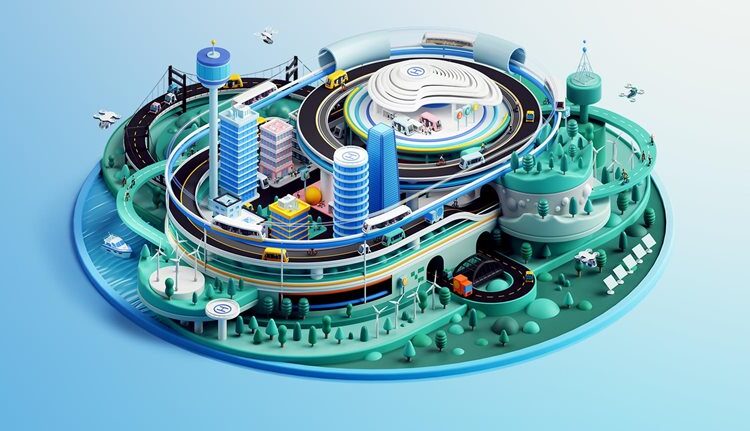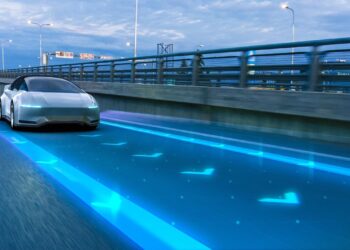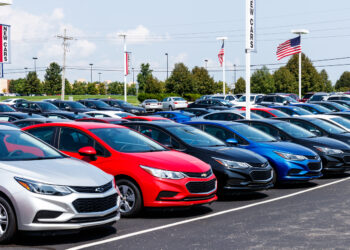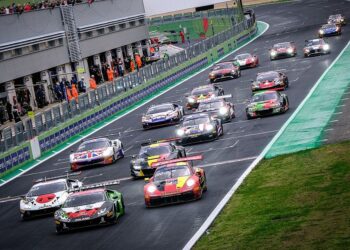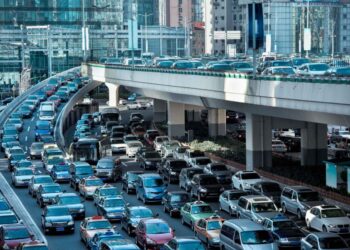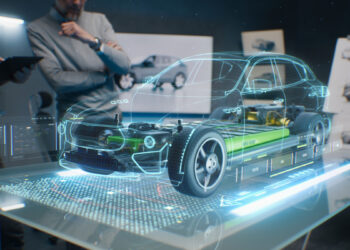Why Mobility Must Evolve
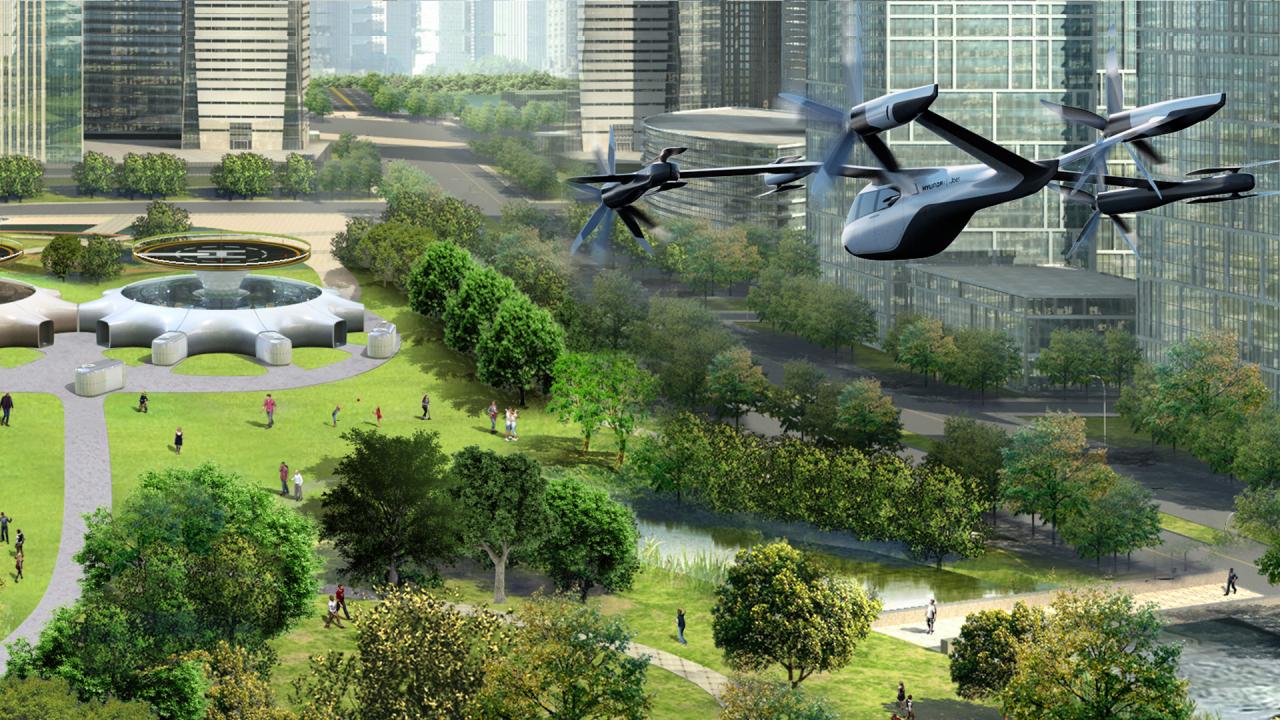
The push for new mobility solutions isn’t arbitrary; it’s driven by pressing global challenges that current transportation systems are ill-equipped to handle.
A. Environmental Imperatives and Climate Change
The urgent need to combat climate change and reduce pollution is perhaps the most significant catalyst for rethinking mobility.
- Decarbonization Targets: Nations worldwide are committing to aggressive carbon emission reduction goals, with transportation being a major contributor to greenhouse gases.
- Air Quality Concerns: Urban areas suffer from poor air quality due to vehicle emissions, leading to health issues and reduced quality of life. Future mobility aims for zero or ultra-low emissions.
- Resource Depletion: Reliance on finite fossil fuels is unsustainable. New solutions promote electric power and renewable energy sources.
- Noise Pollution: Traditional vehicles contribute significantly to urban noise, impacting health and well-being. Electric and quieter alternatives offer respite.
- Waste Management: The lifecycle of vehicles, from manufacturing to disposal, creates environmental waste. Sustainable mobility considers the entire life cycle.
Transitioning to cleaner mobility is essential for planetary health and human well-being.
B. Urbanization and Congestion Crisis
As global populations increasingly concentrate in cities, existing transportation infrastructure is buckling under the pressure.
- Traffic Gridlock: Chronic traffic jams waste countless hours, reduce productivity, and increase fuel consumption and pollution.
- Limited Space: Cities have finite road space. Traditional car ownership demands extensive parking and wide roads, often at the expense of green spaces or pedestrian areas.
- Inefficient Public Transit: While crucial, many public transit systems struggle with last-mile connectivity, flexibility, and meeting diverse commuter needs, leading to underutilization in some areas.
- Infrastructure Strain: Overburdened roads, bridges, and public transport networks require constant, costly maintenance and expansion.
- Accessibility Gaps: Not everyone has access to a private vehicle, and public transport might not reach all areas, creating mobility inequities.
Future mobility aims to create more efficient and adaptable urban movement systems.
C. Technological Advancements and Connectivity
Breakthroughs in artificial intelligence, sensor technology, data analytics, and communication are enabling capabilities previously only imagined.
- Artificial Intelligence (AI): Powers autonomous driving, optimizes routing, predicts traffic patterns, and personalizes mobility services.
- Advanced Sensor Technology: LiDAR, radar, cameras, and ultrasonic sensors enable vehicles to perceive their environment with unprecedented accuracy.
- High-Speed Connectivity (5G): Ultra-low latency and high bandwidth communication enable Vehicle-to-Everything (V2X) communication, crucial for autonomous fleets and smart traffic management.
- Big Data Analytics: Aggregating and analyzing vast amounts of mobility data allows for optimized planning, real-time adjustments, and personalized service delivery.
- Battery Technology: Rapid advancements in energy density and charging speeds make electric vehicles increasingly practical and appealing.
- Manufacturing Innovation: New materials and advanced manufacturing techniques are leading to lighter, more efficient, and more versatile vehicles.
These technologies are the building blocks for truly intelligent and responsive mobility.
D. Changing Consumer Expectations
Modern consumers, especially younger generations, prioritize convenience, flexibility, and sustainability over traditional notions of car ownership.
- Shift from Ownership to Access: A growing preference for “mobility as a service” (MaaS) over outright vehicle ownership, valuing convenient access over asset possession.
- Personalization: Desire for tailored experiences, from preferred routes to in-vehicle entertainment and comfort settings.
- On-Demand Services: Expectation of immediate availability and flexibility, mirroring the “app economy” for other services.
- Environmental Consciousness: A willingness to choose greener options, even if they require minor adjustments in behavior.
- Multimodality: Comfort with combining different modes of transport (e.g., e-scooter to train to ride-share) for a single journey.
- Seamless Integration: Desire for integrated platforms where different mobility options can be booked and paid for effortlessly.
These evolving demands are shaping the types of solutions that will succeed in the market.
Key Pillars of Future Mobility Solutions
The future of mobility is not a single solution but a diverse ecosystem built upon several interconnected pillars.
A. Autonomous Vehicles (AVs)
Self-driving technology is poised to revolutionize how vehicles operate and are utilized.
- Enhanced Safety: Eliminating human error, which accounts for over 90% of accidents, promises a dramatic reduction in road fatalities and injuries.
- Optimized Traffic Flow: AVs can communicate and react with precision, leading to smoother traffic flow, reduced congestion, and potentially higher road capacity through platooning.
- Increased Productivity/Leisure Time: Passengers can use travel time for work, relaxation, or entertainment, transforming commutes.
- Mobility for All: Providing independence for the elderly, disabled, and those unable to drive, dramatically increasing accessibility.
- New Service Models: Enabling robotaxis, autonomous delivery services, and mobile offices or retail spaces.
- Vehicle Utilization: Fleets of AVs can be utilized almost constantly, reducing the need for individual car ownership and parking.
The full impact of Level 4 and Level 5 autonomous vehicles will be transformative, albeit with significant regulatory and ethical considerations.
B. Electric Vehicles (EVs)
The transition to electric powertrains is fundamental for clean and sustainable mobility.
- Zero Tailpipe Emissions: EVs produce no local pollutants, improving urban air quality. When charged with renewable energy, their lifecycle emissions are significantly lower than ICE vehicles.
- Reduced Operating Costs: Electricity is generally cheaper than gasoline, and EVs have fewer moving parts, leading to lower maintenance expenses.
- Superior Driving Experience: Instant torque, quiet operation, and smooth acceleration offer a refined and engaging ride.
- Energy Independence: Reduces reliance on fossil fuels and geopolitical dependencies.
- Grid Integration: The potential for Vehicle-to-Grid (V2G) technology, where EVs can feed power back to the grid during peak demand, enhancing grid stability and resilience.
- Diverse Form Factors: From compact city cars to heavy-duty trucks and even aircraft, electric propulsion is scalable across all vehicle types.
EVs are the foundational technology for a sustainable transportation network.
C. Mobility-as-a-Service (MaaS)
MaaS is the integration of various forms of transport services into a single, on-demand digital platform.
- Seamless Planning and Payment: Users can plan, book, and pay for journeys that combine public transport, ride-sharing, bike-sharing, e-scooters, and even car rentals through one app.
- Personalized Routing: Algorithms suggest the most efficient, cost-effective, or sustainable routes based on user preferences and real-time conditions.
- Reduced Private Car Ownership: By offering convenient alternatives, MaaS can significantly decrease the need for individuals to own private vehicles.
- Optimized Resource Utilization: Efficiently allocates available transport modes, reducing idle time and improving utilization rates.
- Subscription Models: Offering monthly subscriptions for bundles of mobility services, providing cost predictability and convenience.
- Reduced Congestion and Parking Demand: Encourages the use of shared and public transport, freeing up urban space.
MaaS represents a shift from a product-centric to a service-centric view of transportation.
D. Micro-Mobility Solutions
These refer to lightweight vehicles operating at low speeds, typically for short distances, especially for the “first and last mile” of a journey.
- Electric Scooters (e-scooters): Popular for short urban trips, offering convenience and speed over congested routes.
- Electric Bicycles (e-bikes): Extend the range and reduce the physical effort of cycling, making it accessible to more people for commuting and recreation.
- Shared Services: Dockless or dock-based rental systems for e-scooters and e-bikes provide on-demand access.
- Reduced Congestion: Alleviates traffic by offering alternatives to cars for short distances.
- Environmental Benefits: Zero emissions at the point of use.
- Improved Connectivity: Bridges the gap between public transit stops and final destinations, enhancing public transit usability.
- Health and Wellness: Promotes physical activity compared to passive vehicle use.
Micro-mobility solutions are essential for efficient urban movement and reducing reliance on cars for short trips.
E. Advanced Public Transit Systems
Modernizing and expanding public transportation remains a cornerstone of future mobility.
- High-Speed Rail and Hyperloop: For inter-city travel, offering rapid, efficient, and often electric-powered connections.
- On-Demand Public Transit: Integrating flexible routing and scheduling into traditional bus or shuttle services, using dynamic requests rather than fixed schedules in some areas.
- Autonomous Shuttles/Buses: Self-driving public transport vehicles that can operate on dedicated routes or within geo-fenced areas, reducing operational costs and potentially increasing frequency.
- Smart Ticketing and Integrated Fares: Seamless payment systems across different public transport modes, often integrated into MaaS platforms.
- Real-Time Information Systems: Providing accurate, up-to-the-minute data on arrivals, departures, and delays via apps and digital displays.
- Optimized Routing and Scheduling: Using AI to dynamically adjust routes and schedules based on real-time demand and traffic conditions.
- Enhanced Passenger Experience: More comfortable vehicles, better connectivity (Wi-Fi), and improved accessibility features.
A robust and adaptable public transit backbone is vital for sustainable urban development.
The Impact of Future Mobility
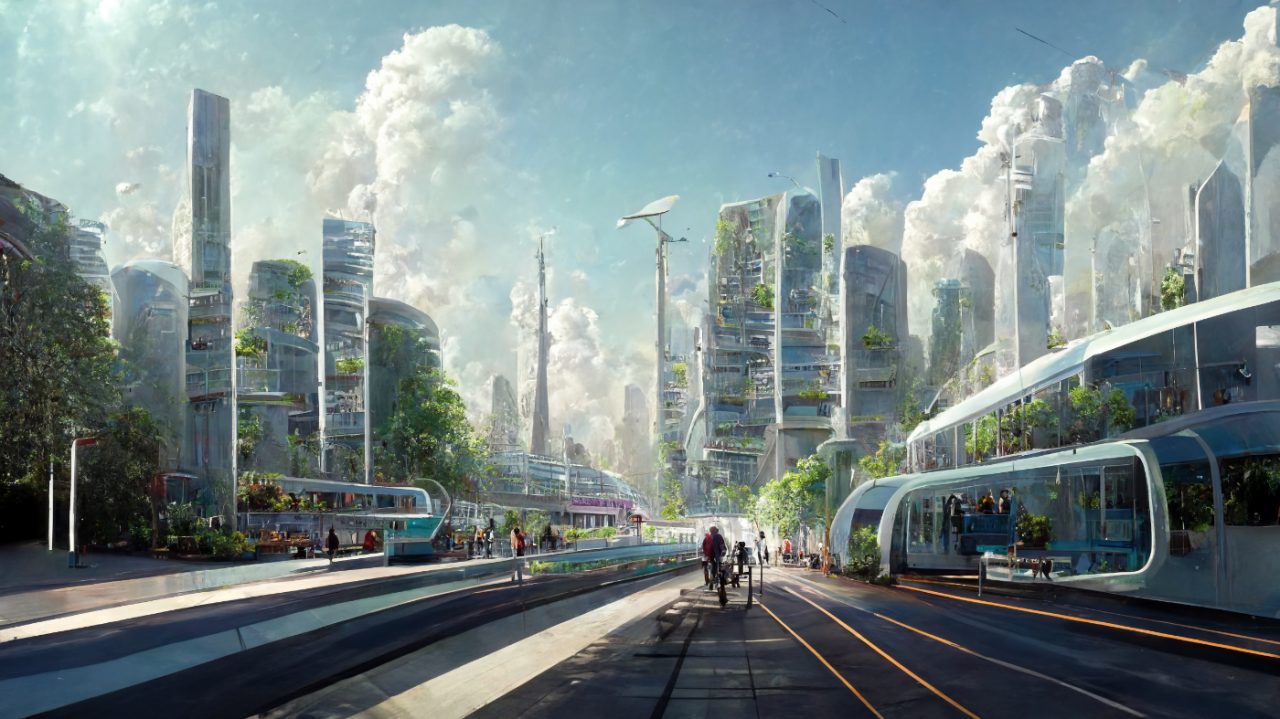
The widespread adoption of these solutions will have profound effects on society, economy, and urban planning.
A. Reshaping Urban Landscapes
Cities will fundamentally change as mobility evolves.
- Reclaiming Space: Less demand for parking lots and wide roads means urban land can be repurposed for parks, housing, commercial spaces, or pedestrian zones.
- Pedestrian and Cyclist Friendliness: Increased focus on walkability and dedicated bike lanes, making cities more livable and enjoyable.
- Decentralization: Improved mobility could allow people to live further from central business districts without sacrificing commute times, potentially leading to more distributed urban development.
- Dynamic Infrastructure: Smart roads, adaptive traffic lights, and connected charging infrastructure that respond in real-time to traffic conditions.
- New Urban Design: Cities may be designed with integrated mobility hubs where different transport modes seamlessly connect.
Future cities will be designed around people, not just cars.
B. Economic Transformation and New Industries
The shift in mobility will create vast economic opportunities and disrupt existing industries.
- New Business Models: Growth of mobility service providers, data analytics companies, and specialized infrastructure developers.
- Job Creation: While some jobs may be displaced (e.g., professional drivers), new jobs will emerge in areas like AI development, autonomous fleet management, cybersecurity, and infrastructure maintenance.
- Reduced Transportation Costs: For consumers, shared and optimized mobility services could lead to lower personal transportation expenses.
- Increased Productivity: Reduced commute times and the ability to work/relax during transit can boost overall economic productivity.
- Supply Chain Optimization: Autonomous logistics will revolutionize goods movement, making supply chains more efficient and resilient.
- Investment in R&D: Massive ongoing investment in research and development for new materials, battery tech, AI, and sensor systems.
This transformation will unlock new value and drive economic growth.
C. Enhanced Social Equity and Accessibility
Improved mobility can lead to more inclusive and equitable societies.
- Greater Independence: Enhanced mobility for the elderly, disabled, and low-income individuals, providing access to jobs, healthcare, education, and social activities.
- Reduced Transportation Burden: Lower costs and increased options can alleviate financial strain on households.
- Access to Underserved Areas: On-demand and flexible services can extend mobility to areas not well-served by traditional public transit.
- Safer Roads: Fewer accidents mean fewer injuries and fatalities, leading to healthier communities.
- Reduced Stress: Less time stuck in traffic and more seamless journeys improve mental well-being.
Mobility solutions can empower individuals and foster more connected communities.
D. Cybersecurity and Data Privacy Challenges
As mobility becomes more connected and data-driven, new vulnerabilities emerge.
- Cyber Threats: Autonomous vehicles and smart infrastructure are potential targets for hacking, requiring robust cybersecurity measures to prevent catastrophic failures or data breaches.
- Data Collection and Usage: Vast amounts of personal mobility data will be collected, raising concerns about privacy, data ownership, and potential misuse.
- Regulatory Frameworks: Development of clear regulations for data governance, security standards, and ethical AI in mobility systems.
- Trust and Transparency: Building public trust in the security and privacy of these new systems is paramount for widespread adoption.
Addressing these challenges will be critical for the safe and ethical deployment of future mobility.
The Road Ahead for Future Mobility
The transition to a new mobility paradigm is complex and requires concerted effort from multiple stakeholders.
A. Integrated Policy and Regulation
Governments play a pivotal role in creating a supportive environment for new mobility solutions.
- Harmonized Regulations: Developing consistent legal frameworks for autonomous vehicles, shared services, and new infrastructure across different jurisdictions.
- Incentives and Subsidies: Encouraging adoption of EVs, shared mobility, and investment in related infrastructure through tax breaks, grants, and favorable policies.
- Urban Planning Integration: Incorporating future mobility considerations into city planning, zoning, and infrastructure development.
- Pilot Programs and Sandboxes: Creating controlled environments for testing and deploying new technologies to gather data and refine regulations.
- Public-Private Partnerships: Fostering collaboration between government entities and private companies to accelerate innovation and deployment.
- International Cooperation: Sharing best practices and standardizing technologies across borders for global interoperability.
Forward-thinking policy is the backbone of successful mobility transformation.
B. Infrastructure Development and Modernization
The physical and digital infrastructure must evolve to support new mobility.
- EV Charging Networks: Expanding public and private charging infrastructure, including fast chargers and smart charging solutions.
- 5G Connectivity: Deploying robust 5G networks in urban and rural areas to support V2X communication and data flow.
- Smart Road Technology: Implementing sensors, communication devices, and intelligent traffic management systems on roads.
- Mobility Hubs: Creating dedicated areas where different transport modes seamlessly connect, with charging, parking, and rental options.
- Data Centers and Cloud Infrastructure: Building the capacity to process, store, and analyze the massive amounts of data generated by future mobility systems.
- Digital Twins: Creating virtual replicas of urban environments to simulate and optimize mobility solutions before physical deployment.
Investing in smart and resilient infrastructure is non-negotiable.
C. Public Education and Engagement
Building public acceptance and trust is crucial for the success of future mobility.
- Addressing Concerns: Openly communicating about safety, privacy, and job displacement.
- Highlighting Benefits: Educating the public about the environmental, economic, and convenience benefits of new mobility options.
- Pilot Programs for Users: Allowing people to experience and interact with new technologies firsthand to build familiarity and confidence.
- User-Centric Design: Ensuring new mobility services are intuitive, accessible, and meet real-world needs.
- Inclusive Design: Designing solutions that cater to diverse populations, including those with disabilities or limited technological literacy.
Engaging the public as partners in this transformation is vital for widespread adoption.
D. Sustainable Business Models and Funding
New mobility solutions require viable economic models for long-term sustainability.
- Flexible Pricing: Dynamic pricing models for ride-sharing and other services that adapt to demand and supply.
- Subscription Revenue: Moving towards subscription-based services for mobility access rather than single transactions.
- Data Monetization (Ethical): Exploring ethical ways to leverage mobility data for urban planning, advertising, and service improvement.
- Public Funding and Subsidies: Strategic government investment, especially in public transport infrastructure and early-stage technology deployment.
- Private Investment: Attracting venture capital and corporate investment into innovative mobility startups and technologies.
- Circular Economy Principles: Designing vehicles and systems with a focus on recycling, reuse, and minimizing waste throughout the lifecycle.
Ensuring financial viability and environmental responsibility will drive long-term success.
Conclusion
The emergence of future mobility solutions signals a profound shift in how we conceive of and experience transportation. Driven by an urgent need for sustainability, efficiency, and inclusivity, these innovations—from autonomous electric vehicles and integrated Mobility-as-a-Service platforms to micro-mobility and urban air transport—are poised to redefine our cities, economies, and daily lives. While significant technical, regulatory, and societal challenges lie ahead, the momentum is undeniable. The era of static, car-centric urban environments is giving way to dynamic, intelligent, and interconnected mobility ecosystems. This isn’t just about getting from point A to point B; it’s about creating a smarter, cleaner, and more equitable way for everyone to move, opening up new possibilities and shaping a truly transformative future.

